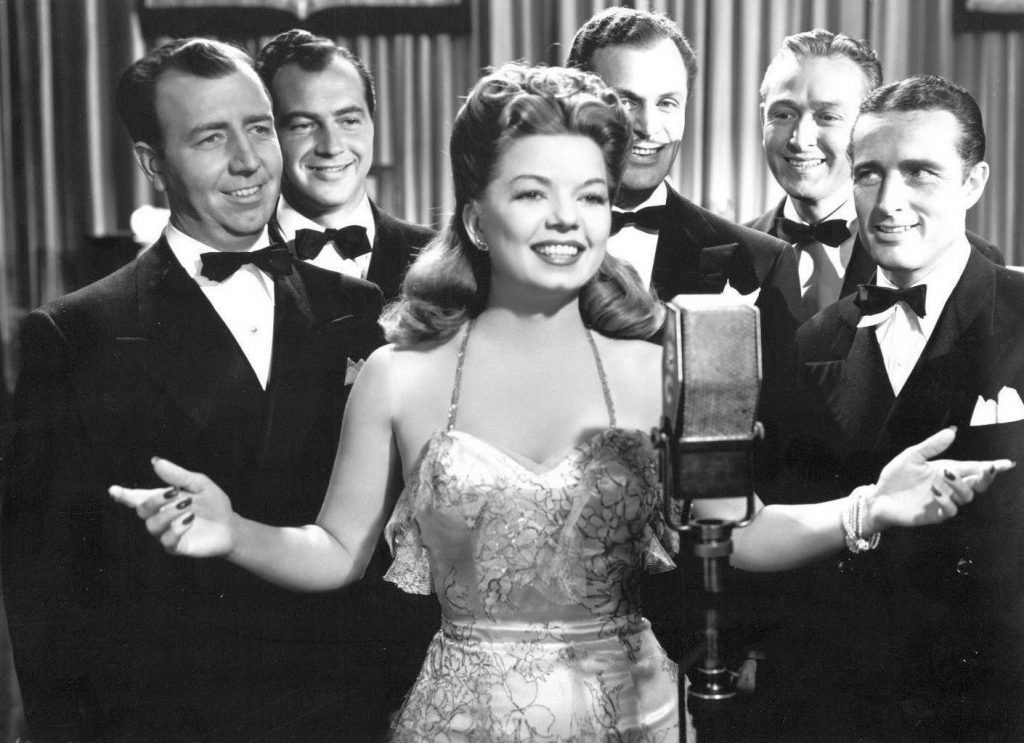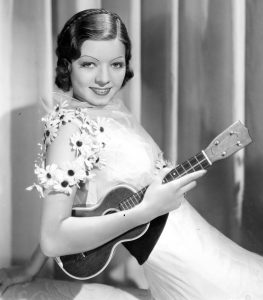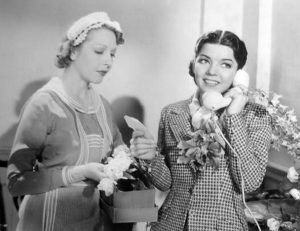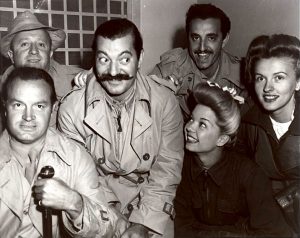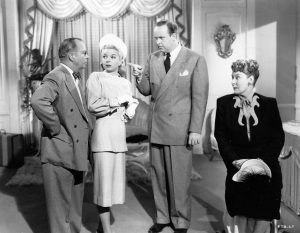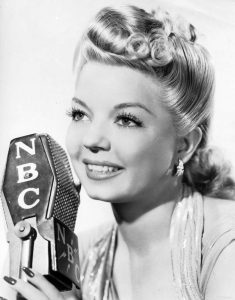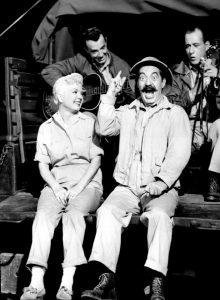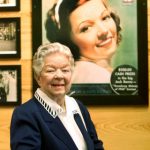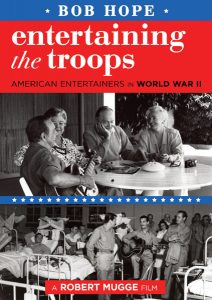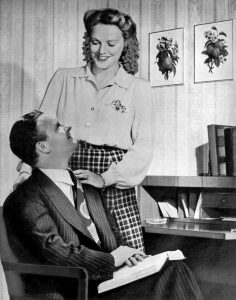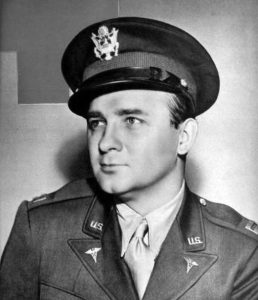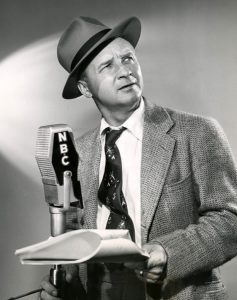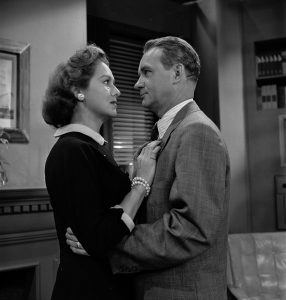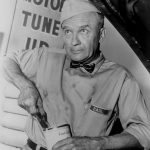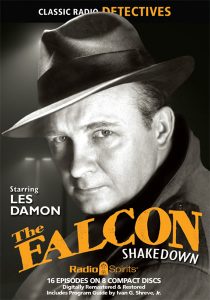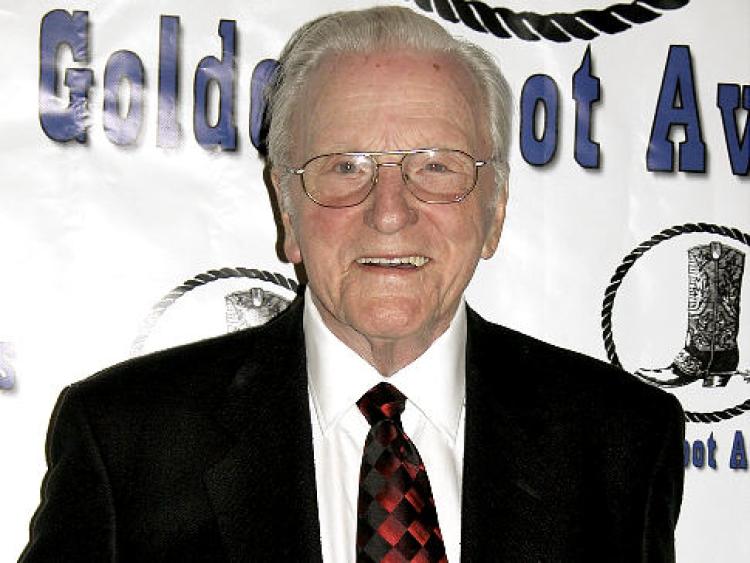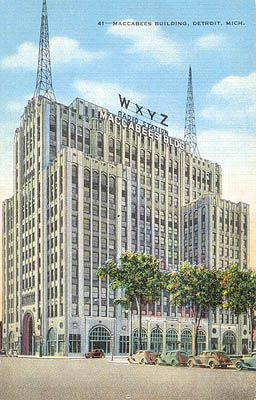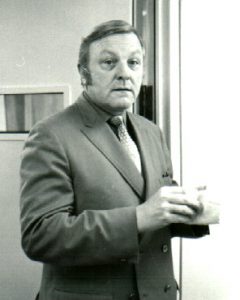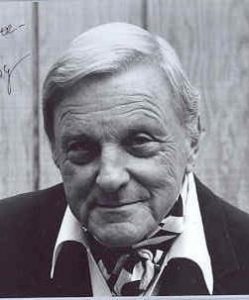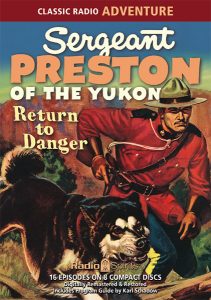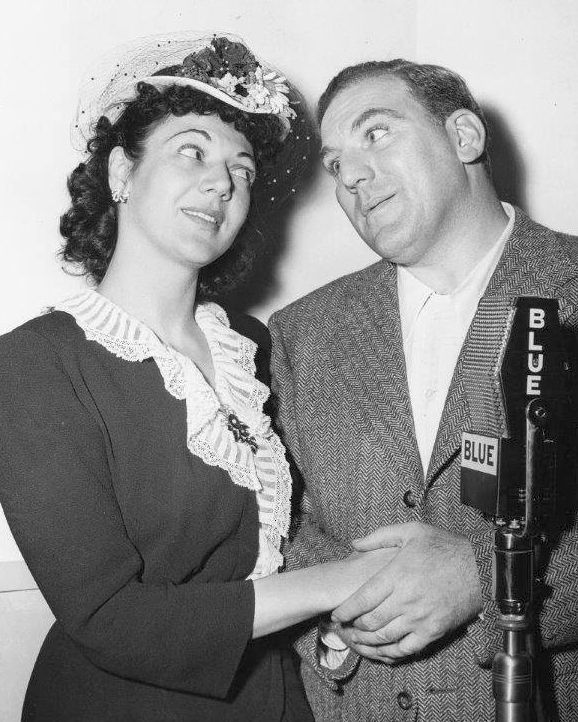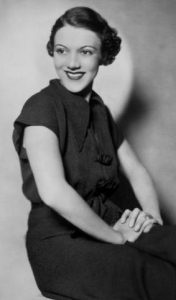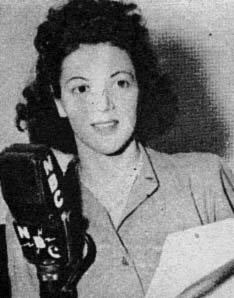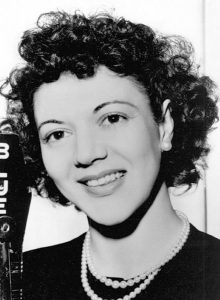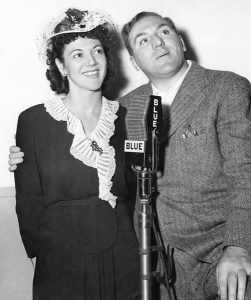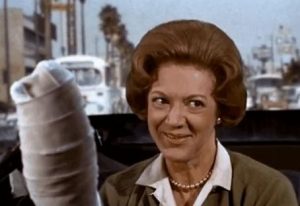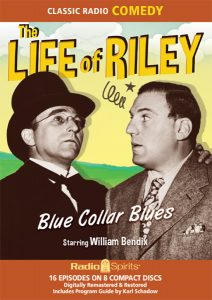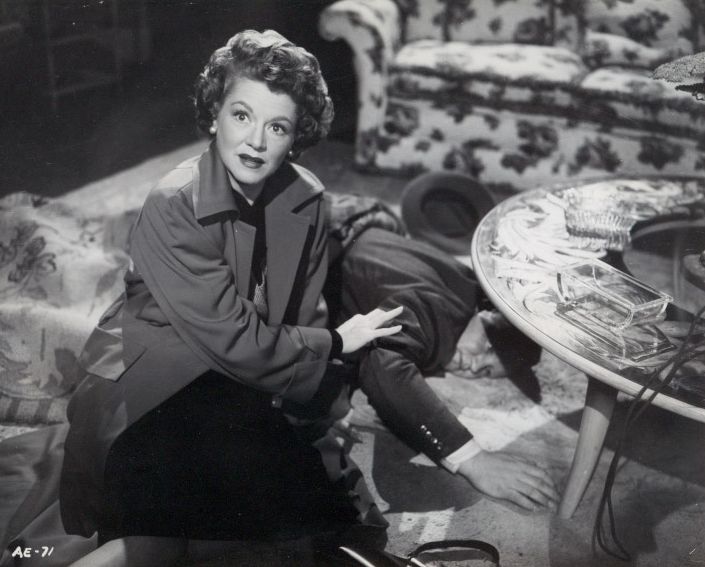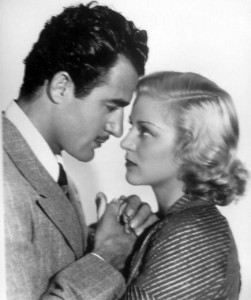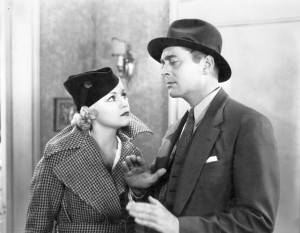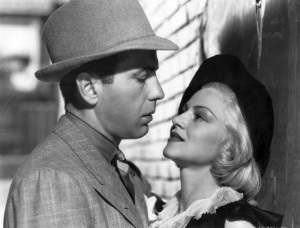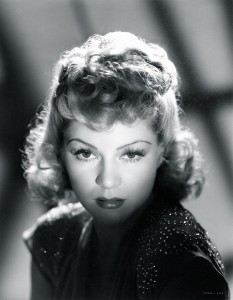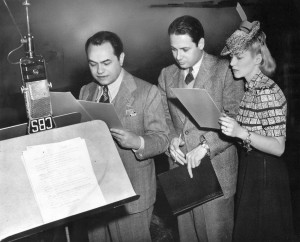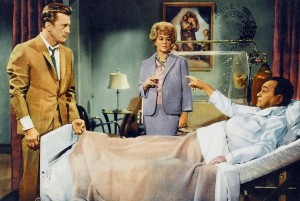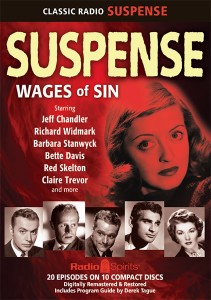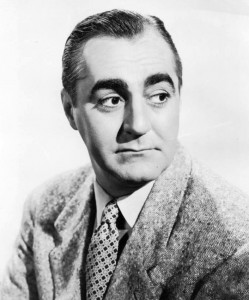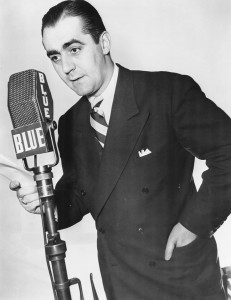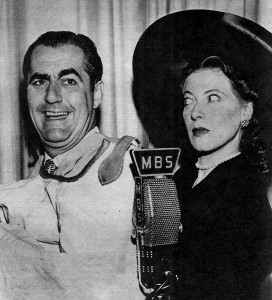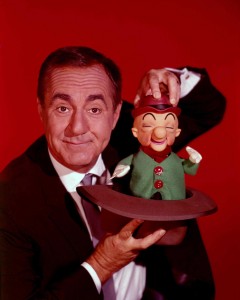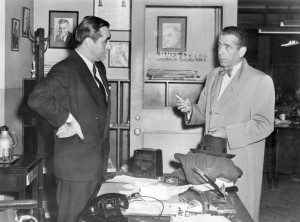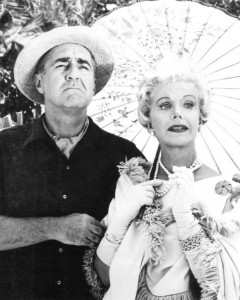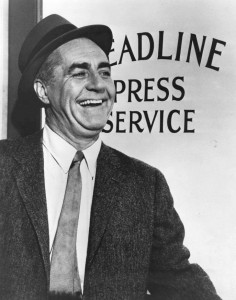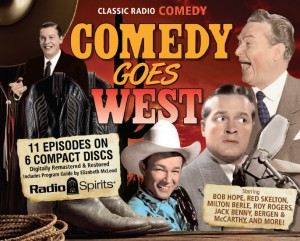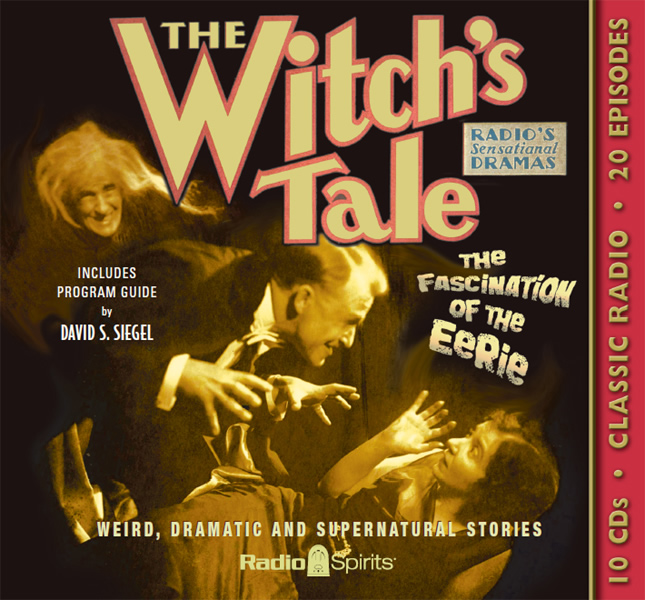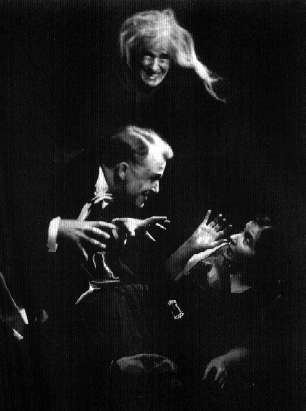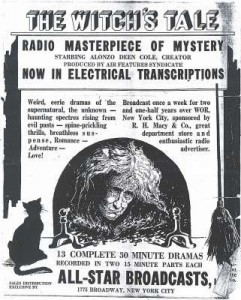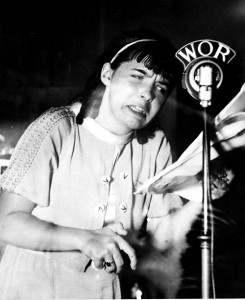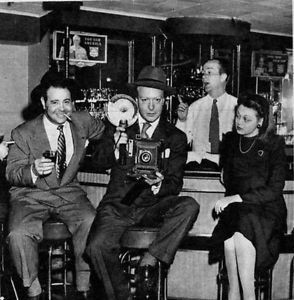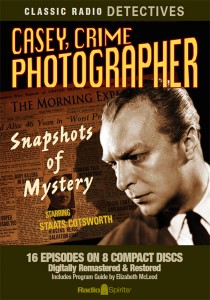“…that most famous of all manhunters…”
Nick Carter received the first knock at his radio door on this date in 1943. I know this sounds like an odd statement, but I’m referring to the memorable opening that signaled the start of Nick Carter, Master Detective—a popular radio crime drama, and a program that would become one of the Mutual network’s most enduring hits. The show would begin with the rapping on the door to Carter’s brownstone office (bang-bang-bang-bang-bang)—an action that received no response. There would follow a second series of knocks, but still no answer. Finally, the unknown individual rapping on Nick’s chamber door would get desperate—BANG-BANG-BANG-BANG-BANG!!! The door would open, and Carter’s girl Friday, Patsy Bowen, would respond with a startled, “What’s the matter? What is it?”
A male voice would urgently reply: “Another case for Nick Carter, Master Detective!” The show’s announcer would back him up by intoning: “Yes, it’s another case for that most famous of all manhunters…the detective whose ability at solving crime is unequalled in the history of detective fiction—Nick Carter, Master Detective!”
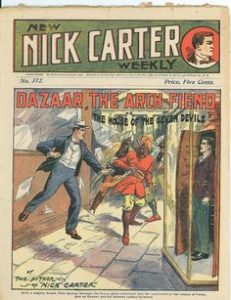 The sleuth that John J. “Jess” Jevins (author of the just-released Encyclopedia of Pulp Heroes) tabbed “the grandfather of superheroes” had his origins in the pulps. John Russell Coryell introduced Nick Carter in a story published in Street & Smith’s New York Weekly in 1886, “The Old Detective’s Pupil; or, The Mysterious Crime of Madison Square.” Carter shared many of the qualities ascribed to the legendary Sherlock Holmes: a keen analytical mind, a knowledge of arcane trivia, and a talent for disguise. (Nick was also in remarkable physical condition, having been taught by his father to maintain good health as well as solid mental acuity.) It’s important to note that while some often refer to Nick Carter as “the American Sherlock Holmes,” the reality is that the detective was pounding a beat in the pulps nearly a year before Arthur Conan Doyle’s famous sleuth arrived on the scene.
The sleuth that John J. “Jess” Jevins (author of the just-released Encyclopedia of Pulp Heroes) tabbed “the grandfather of superheroes” had his origins in the pulps. John Russell Coryell introduced Nick Carter in a story published in Street & Smith’s New York Weekly in 1886, “The Old Detective’s Pupil; or, The Mysterious Crime of Madison Square.” Carter shared many of the qualities ascribed to the legendary Sherlock Holmes: a keen analytical mind, a knowledge of arcane trivia, and a talent for disguise. (Nick was also in remarkable physical condition, having been taught by his father to maintain good health as well as solid mental acuity.) It’s important to note that while some often refer to Nick Carter as “the American Sherlock Holmes,” the reality is that the detective was pounding a beat in the pulps nearly a year before Arthur Conan Doyle’s famous sleuth arrived on the scene.
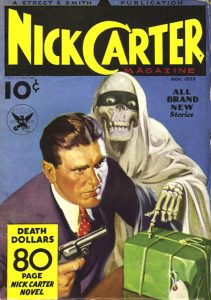 Coryell wrote the first three Nick Carter exploits…and then the job of chronicling the detective’s further adventures fell to a variety of writers employed by Street & Smith. Most of Carter’s cases would eventually be penned by Frederic van Rensselaer Day. Nick struck an immediate chord with pulp fiction fans, and it wasn’t long before he was being published in his own magazine…under a variety of names, but usually referred to as Nick Carter Weekly. Publication stopped in 1915, and the tales of Nick Carter (along with his fellow gumshoes) moved to Detective Story Magazine, which could be found on newsstands until 1927. With the success of both The Shadow and Doc Savage in the 1930s, Carter was brought out of retirement with Nick Carter Detective Magazine in 1933. Stories about Nick continued in other periodicals after that; he was even in the inaugural issue of Shadow Comics in March of 1940, which republished stories of many of Street & Smith’s popular pulp heroes. That line of comic books continued well into the remainder of the decade.
Coryell wrote the first three Nick Carter exploits…and then the job of chronicling the detective’s further adventures fell to a variety of writers employed by Street & Smith. Most of Carter’s cases would eventually be penned by Frederic van Rensselaer Day. Nick struck an immediate chord with pulp fiction fans, and it wasn’t long before he was being published in his own magazine…under a variety of names, but usually referred to as Nick Carter Weekly. Publication stopped in 1915, and the tales of Nick Carter (along with his fellow gumshoes) moved to Detective Story Magazine, which could be found on newsstands until 1927. With the success of both The Shadow and Doc Savage in the 1930s, Carter was brought out of retirement with Nick Carter Detective Magazine in 1933. Stories about Nick continued in other periodicals after that; he was even in the inaugural issue of Shadow Comics in March of 1940, which republished stories of many of Street & Smith’s popular pulp heroes. That line of comic books continued well into the remainder of the decade.
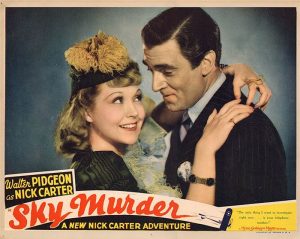 Despite his print popularity, it took a while for Nick Carter to start solving cases over the radio on a weekly basis. The radio program was even preceded by a short-lived movie franchise, which began in 1939 with the Metro-Goldwyn-Mayer release of Nick Carter, Master Detective. MGM’s own Walter Pidgeon essayed the role of Nick, and continued in the two Carter follow-ups, Phantom Raiders and Sky Murder (both released in 1940). Though the studio had purchased the rights to all the Nick Carter stories before starting on the fictional detective’s cinematic endeavors, they had original screenplays written for the series. After those three films, however, MGM abandoned the franchise.
Despite his print popularity, it took a while for Nick Carter to start solving cases over the radio on a weekly basis. The radio program was even preceded by a short-lived movie franchise, which began in 1939 with the Metro-Goldwyn-Mayer release of Nick Carter, Master Detective. MGM’s own Walter Pidgeon essayed the role of Nick, and continued in the two Carter follow-ups, Phantom Raiders and Sky Murder (both released in 1940). Though the studio had purchased the rights to all the Nick Carter stories before starting on the fictional detective’s cinematic endeavors, they had original screenplays written for the series. After those three films, however, MGM abandoned the franchise.
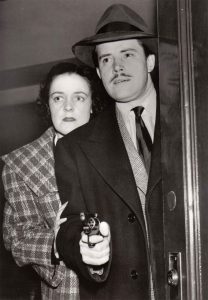 Deprived of his movie income, Nick Carter then made his move into the aural medium. It was tough for Nick Carter, Master Detective to establish a beachhead on the Mutual schedule; during its initial years on the air, the program would be bounced around in eleven different time slots between 1943 and 1946…and to make things even more confusing for the listening audience, the series went by the title of The Return of Nick Carter for a time as well. The show eventually stayed put in a Sunday night time slot (6:30pm) from 1946 to 1952, sponsored by Old Dutch Cleanser and Cudahy Packing (makers of Del Rich Margarine). Libby Packing took over sponsorship for a year after that.
Deprived of his movie income, Nick Carter then made his move into the aural medium. It was tough for Nick Carter, Master Detective to establish a beachhead on the Mutual schedule; during its initial years on the air, the program would be bounced around in eleven different time slots between 1943 and 1946…and to make things even more confusing for the listening audience, the series went by the title of The Return of Nick Carter for a time as well. The show eventually stayed put in a Sunday night time slot (6:30pm) from 1946 to 1952, sponsored by Old Dutch Cleanser and Cudahy Packing (makers of Del Rich Margarine). Libby Packing took over sponsorship for a year after that.
In the role of Nick Carter was actor Lon Clark, who handled the part for the entire run of the series. This is an amazing accomplishment…particularly when you know that nearly 700 broadcasts of Nick Carter, Master Detective aired between 1943 and 1955. (Yours Truly, Johnny Dollar had close to as many episodes…and they needed six actors to play the title role.) Clark also had decent luck in keeping a secretary. Helen Choate played Patsy Bowen, Nick’s assistant, in the early years of the program. Choate would be replaced by Charlotte Manson, who held the role until the series’ finale. Carter’s sidekick, “Scubby” Wilson (described as a “demon” reporter…but don’t be scared—he didn’t have horns or anything), was portrayed by John Kane. The trio of Nick, Patsy and Scubby often made life difficult for Sergeant “Matty” Mathison (Ed Latimer), Nick’s friendly cop nemesis. (Patsy wasn’t shy about reminding Matty that he’d be toiling in another area of civil service were it not for Nick; she’d even take the time to make sure that Mathison’s superior, Lt. Riley [Humphrey Davis], had this pertinent information.)
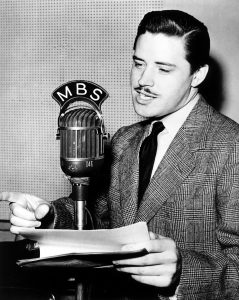 Additional actors who appeared on Nick Carter, Master Detective included Bill Johnstone, Bryna Raeburn, Raymond Edward Johnson, Maurice Tarplin, and Al Hodge. For a time, the detective’s adopted son Chick (played by Bill Lipton and Leon Janney) was featured on the program. That character moved on to a spin-off series titled Chick Carter, Boy Detective, which premiered on Mutual in July of 1943. Whereas Chick’s old man solved his cases in a weekly half-hour format, young Chick went the serial route: in fifteen-minute installments five-days-a-week. Nick even flirted with that same format briefly in 1944, with an attempt made to combine the two show’s storylines. But in the end Chick didn’t have the stamina, and his series came to a close in 1945. Nick Carter, Master Detective, on the other hand, would remain a Mutual network staple until September 25, 1955.
Additional actors who appeared on Nick Carter, Master Detective included Bill Johnstone, Bryna Raeburn, Raymond Edward Johnson, Maurice Tarplin, and Al Hodge. For a time, the detective’s adopted son Chick (played by Bill Lipton and Leon Janney) was featured on the program. That character moved on to a spin-off series titled Chick Carter, Boy Detective, which premiered on Mutual in July of 1943. Whereas Chick’s old man solved his cases in a weekly half-hour format, young Chick went the serial route: in fifteen-minute installments five-days-a-week. Nick even flirted with that same format briefly in 1944, with an attempt made to combine the two show’s storylines. But in the end Chick didn’t have the stamina, and his series came to a close in 1945. Nick Carter, Master Detective, on the other hand, would remain a Mutual network staple until September 25, 1955.
Even after bidding radio a fond fare-thee-well in the mid-1950s, Nick Carter would continue to demonstrate the importance of maintaining top physical condition by getting a second lease on life in the 1960s. The Carter franchise, influenced by the success of the James Bond novels/movies, would jump-start with a series of highly successful pulp novels under the Nick Carter: Killmaster banner. Those novels continued to be cranked out until the late 1990s, proving that “the most famous of all manhunters” could take a licking but keep on ticking.
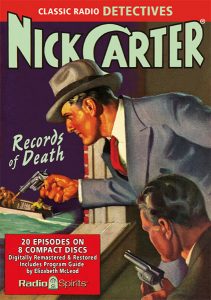 You’ll excuse us, however, if we state a preference for the Nick Carter who presented his adventures courtesy of “the theater of the mind”; Radio Spirits offers several collections of vintage Nick Carter, Master Detective broadcasts, including our latest collection, Records of Death, and the previously released Echoes of Death and Chasing Crime (I wrote the liner notes!). You’ll also find a Nick Carter adventure (“Death in the Pines”) on our Great Radio Detectives compendium, and some Yuletide Nick (“Nick Carter’s Christmas Adventure”) on The Voices of Christmas Past. For a nightcap, why not venture back to the early pulp fiction days of the great detective in this fantabulous reprint which features “Calling Nick Carter”—an entertaining tale that teams the sleuth with none other than The Shadow!
You’ll excuse us, however, if we state a preference for the Nick Carter who presented his adventures courtesy of “the theater of the mind”; Radio Spirits offers several collections of vintage Nick Carter, Master Detective broadcasts, including our latest collection, Records of Death, and the previously released Echoes of Death and Chasing Crime (I wrote the liner notes!). You’ll also find a Nick Carter adventure (“Death in the Pines”) on our Great Radio Detectives compendium, and some Yuletide Nick (“Nick Carter’s Christmas Adventure”) on The Voices of Christmas Past. For a nightcap, why not venture back to the early pulp fiction days of the great detective in this fantabulous reprint which features “Calling Nick Carter”—an entertaining tale that teams the sleuth with none other than The Shadow!


